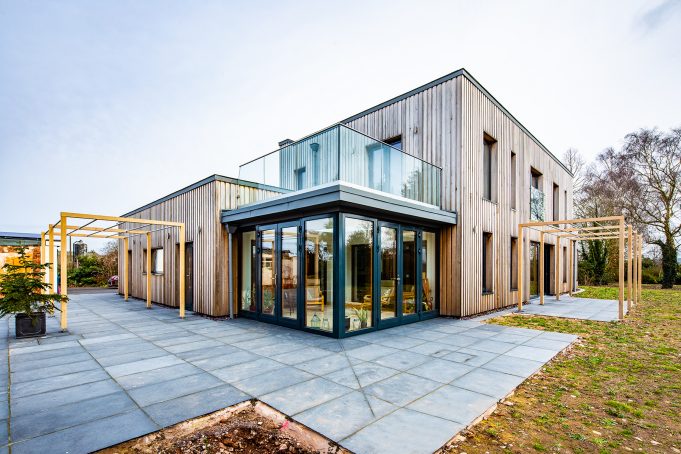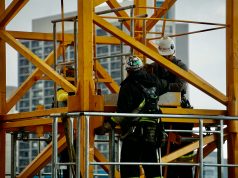If you enter a Google search for ‘energy efficient building standards’, a slightly overwhelming assortment of recommendations, government policies and directives, blogs and, of course, advertisements are liable to flash up on your screen. Several of them take you to hefty and largely impenetrable PDF files.
The business of defining a truly energy-efficient specification for building regulations is a varied and constantly evolving one. And we understand – the choice of guidelines on building procedure and energy efficiency standards, though they might have features in common, can be overwhelming for first-time builders.
In this article, we’re taking a closer look at one such specification. Dubbed “the world’s leading standard in energy efficient design”, the German-conceived Passivhaus (or Passive House, depending on your nationality and semantic preference) standard is becoming well known and increasingly popular with UK builders.
We’ll cover what’s involved in becoming Passive House certified, how the build specification differs from the UK norm, and point you to websites and information points that will furnish you with a better understanding when facing the information overload in your search engine.
So what is the Passive House Standard, what does it achieve, and what does it take to become Passive House certified?
If you’ve read this far, you’re probably aware that the Passive House Standard is a set of criteria for building. It encompasses all buildings – not just homes – and takes the form of a ‘construction concept’ (https://passipedia.org/ ) rather than a brand name. To become Passive house certified, new buildings must be constructed, or existing dwellings retrofitted, according to strict requirements in five key areas of the build process:
- Triple-glazed windows and insulated frames ensure that interior window surfaces are never cold to the touch. Low-Emissivity (Low-E) glass, with argon or krypton gas between the panes, is used. Learn more about Low-E glass here. The Passive House Institute (PHI) also specifies a U-value of 0.80W/(m²K) or less – a specification easily met by most of our triple-glazed range.
- Thermal insulation is usually considered the most important requirement in the design and building process of a Passive House. All opaque surfaces of a building must have u-values of 0.15 W/(m²K) or less. This keeps warmth in during winter and heat out during summer.
- Adequate ventilation – with heat recovery – circulates fresh air through the building and ensures that it remains at or near room temperature. This prevents the kind of stuffiness you’ll remember from the wintertime years of closed windows in school classrooms and avoids a heat-trap situation in warmer temperatures. A Mechanical Heat Ventilation Recovery (MHVR) system helps to keep both excessive heat and cold very firmly to a minimum
- Passive houses are designed to have a continuous airtight outer shell. Leakage through any gaps must be less than 0.6 of the total house volume, per hour, at 50 Pascals pressure. This rate is known as Air Changes per Hour (ACH50) and is measured in a process known as a blower door test. It requires airtightness to be around 20x that of a standard build – allowing for clear comfort benefits that include reducing draughts and cold spots. Crucially, the longevity of a building is also improved. Indoor air always has a higher water vapour content than outdoor air – and so, when draught spots are not eliminated, the condensation caused by air cooled as it leaves the building can cause moisture problems that weaken the building components.
- Passive Houses are designed to reduce thermal bridging, especially in cooler climates. Thermal bridging refers to an area or object that is more conductive than the materials around it. Heat follows the path of least resistance, so thermal bridging usually means in practice that we have more heat loss and colder interior surface temperatures. An example of a classic thermal bridge spot: insufficient insulation is detailed below a door or window frame. The interior surfaces are barely separated from the cold exterior face of the building and all manner of cold and damp spots ensue. How do Passive House requirements tackle this? Detailed planning is required to eliminate thermal bridging wherever and minimise their impact where some thermal bridging is unavoidable. Technical details of the thermal bridging requirements can be found here .
The Passive House Institute places emphasis on detailed planning to make achieving the standard as realistic, cost-effective and efficient a process as possible. It shouldn’t cost the earth to construct comfortable, energy efficient buildings.
What are the benefits of building to Passive House Standards?
Clearly, the five criteria we’ve looked at will each have a material impact on the energy consumption and daily living condition of a building. We can also go some way in quantifying the absolute difference it makes. According to the Passipedia website:
“Passive House buildings allow for space heating and cooling related energy savings of up to 90% compared with typical building stock and over 75% compared to average new builds. Passive House buildings use less than 1.5 l of oil or 1.5 m3 of gas to heat one square meter of living space for a year – substantially less than common “low-energy” buildings. Vast energy savings have been demonstrated in warm climates where typical buildings also require active cooling.”
More benefits : –
- Quantifiable energy standard that the owner knows has been achieved
- Consistent supply of fresh air throughout the building, meaning higher quality and more hygienic air supply
- Improved durability of the building
- Significantly lower cost to heat and cool buildings
- Possible uplift in property value
- In some countries or regions, Passive Houses
- If building with the Passive House’s Planning Packages revention of errors with thorough external checking of the plans and process by the Institute prior to the start of construction.
- energy efficiency is actually only part of passivhaus. People don’t often realise that the Passivhaus Standard is also a rigorous comfort standard” (http://elrondburrell.com/blog/passivhaus-comfort/ ) For more on why Passive House standards improve the comfort of your home, we’d point you to this Architect, Passive House designer and blogger Elrond Russell writes brilliantly on the real-world benefits owners of Passive Houses benefit from in their daily lives.
Norrsken & Passive Houses
We are the home of high-performance windows and doors. Many of our customers are attracted by the very real improvement in comfort, living conditions and energy consumption that Passive House requirements bring – so we’re used to supplying and installing for customers building to Passive (or near Passive) standards.
One of our largest ever commercial projects, the Passive House certified Seaton Beach (https://www.norrsken.co.uk/newsitem/seaton-wins-award) development has just won its third award for Residential Property of the Year in the Michaelmores Property Awards 2020 , having already taken awards for Sustainable Development in the International Property Awards 2019 / 2020.
We specialise in products that bring real comfort and energy efficiency to the buildings they’re built into and we’re passionate about what we do.
Want to carry on reading?
The Passive House Institute produces a leaflet with more details of the technical specification of these points that you can download here . (https://passiv.de/en/03_certification/02_certification_buildings/09_guide/09_guide.html )
The https://passipedia.org/ resource has a wealth of information.
Want something to the point? See https://energysavingtrust.org.uk/passivhaus-what-you-need-know/ for a breezy but useful overview.
This article is written with readers in cooler climates, like here in the UK or in central Europe, especially in mind. Information on Passive House construction in warmer climates can be found here , on the Passipedia website.














